The rate of vaccination in Italy is high and, apparently, the Covid epidemic is slowly subsiding. However, as in most European countries, we went through a period of reduced mobility and social distancing, even when not in complete lockdown.
During the worst part of the epidemic, I started almost by chance a minimalistic photographic project, to photograph the ex-votos votive offerings and religious icons gathered at the street shrines within walking distance of my home, as permitted by the mobility restrictions.
Italy used to be a very Catholic country, and Rome, the seat of the Pope, even more so, to the limit of bigotry. It is very frequent in Italy to see religious images, most often of the Virgin Mary, at street shrines.
Beware the crossing
These are usually located at crossings, and often on the exterior walls of Catholic institutions. Where I live, they are relatively modern and have no artistic value. However, their historical rationale is far more ancient than this modern manifestation would allow and testifies to old superstitions.
Street crossings were considered dangerous, because the passer-by or pilgrim could encounter criminals, but also with the devil. The religious icon was meant to protect the crossing and to prevent the devil from lurking, waiting for innocent pilgrims.
In some cases, street icons may mark places that are noteworthy for events of the life of saints, or for divine manifestations. Be it as it may, these icons became symbols of a sort of protection of the place and the surroundings. The local people began to ask the divinity for graces and miracles, often for healing of illnesses, but in some cases for more mundane benefits.
If the grace was allowed (that is, the illness healed) a plaque was added below the icon with the appropriate thanks. The majority of the plaques and writings are quite succinct and just thank the divinity for the allowed favour; some are more explicit. I saw one plaque giving thanks for the victory of a favoured soccer team.
Naive
Street icons and ex-votos are a psychological remnant of a past era and have the charm of a humble and naive world not yet completely vanished, but culturally far behind ours.
Ex-votos go back to a very distant past and encompass many different cultures as far removed as African paganism and Oriental religions. The Romans had a host of minor deities to whom they made small offerings. They had domestic divinities called Larii and Penates (whom they imported from the Etruscans) who enjoyed small shrines and statues in the house, but these did not offer protection outside the home.
The Roman goddess of roads and road crossings was Hecate, famous for her bad temper, to whom offerings at the local temple were made before each trip. Christians everywhere tried to absorb ancient pagan rites and to replace pagan deities with their own: the Virgin Mary, Jesus, and saints.
These manifestations of superstition or divine providence, whichever way you look at them, seemed an appropriate photography project for the epidemic. I am curious to see whether plaques thanking for the end of Covid (when it eventually arrives) will be added.
Most surely in Italy and abroad there are much more ancient and picturesque street icons than the ones I found near my home; after all, I live in a district dating back only to the end of the 19th Century and the icons presented here (in no particular order) are mostly from the 1950s or 1960s. However, their interest, whatever it may be, lies precisely in their being from a period where one might not have expected them to survive: members of a species that we would think long extinct.
I took these images with a Fuji XE3 camera and the 15-45 mm kit lens. The camera is small and inconspicuous, easy to carry in the smallest of bags. Technically, capturing such images presents only one difficulty, that of not including parked cars, motorcycles and the other items that clutter our chaotic streetscape.
Read more from the author
Make a donation to help with our running costs
Did you know that Macfilos is run by five photography enthusiasts based in the UK, USA and Europe? We cover all the substantial costs of running the site, and we do not carry advertising because it spoils readers’ enjoyment. Every amount, however small, will be appreciated, and we will write to acknowledge your generosity.

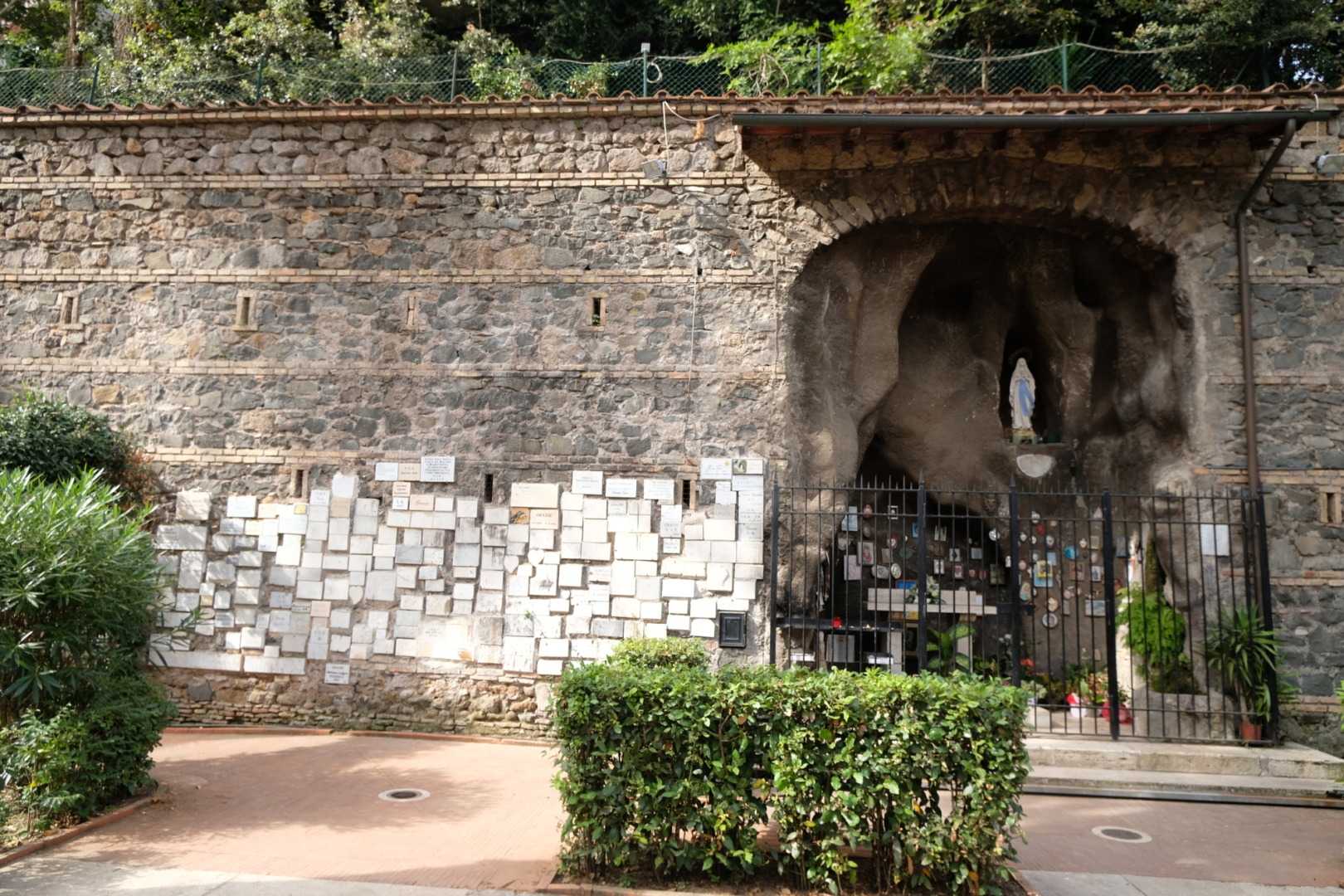
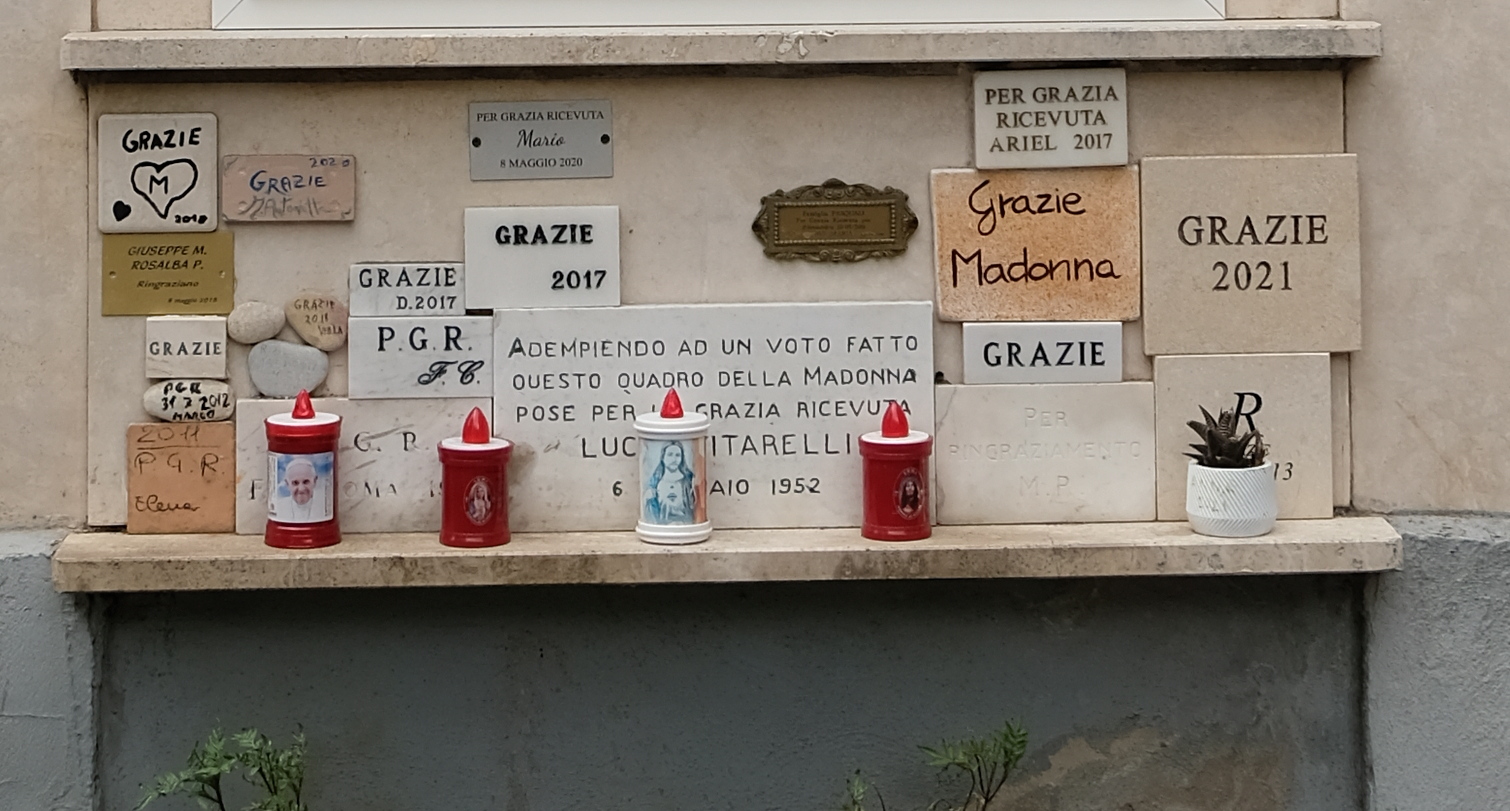
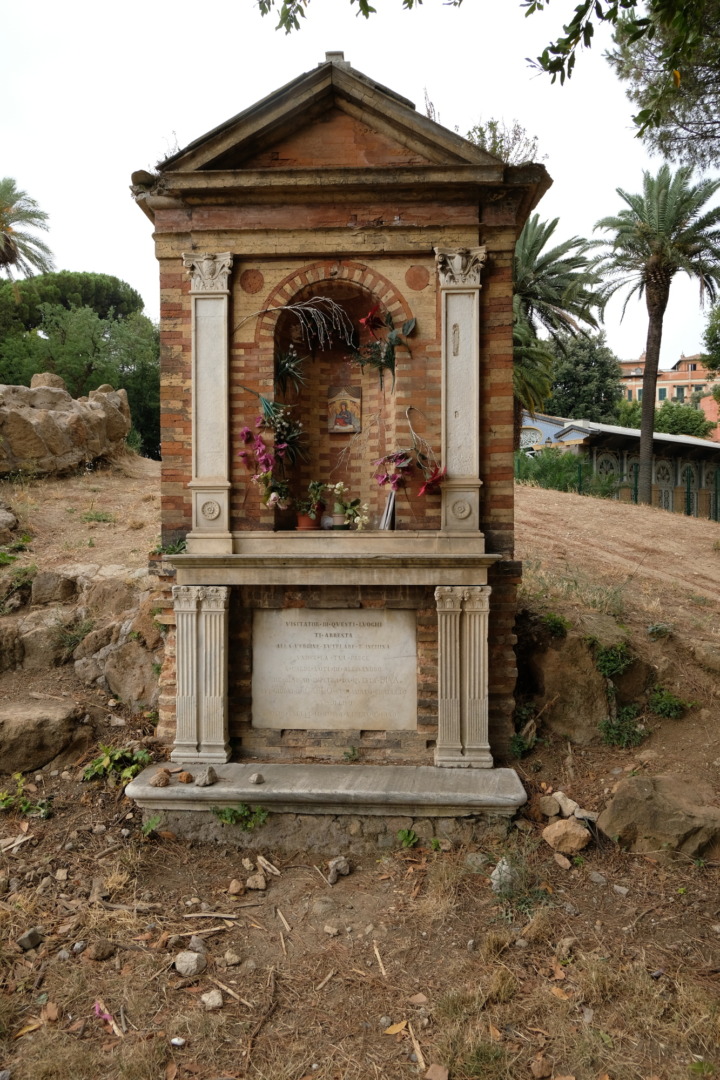
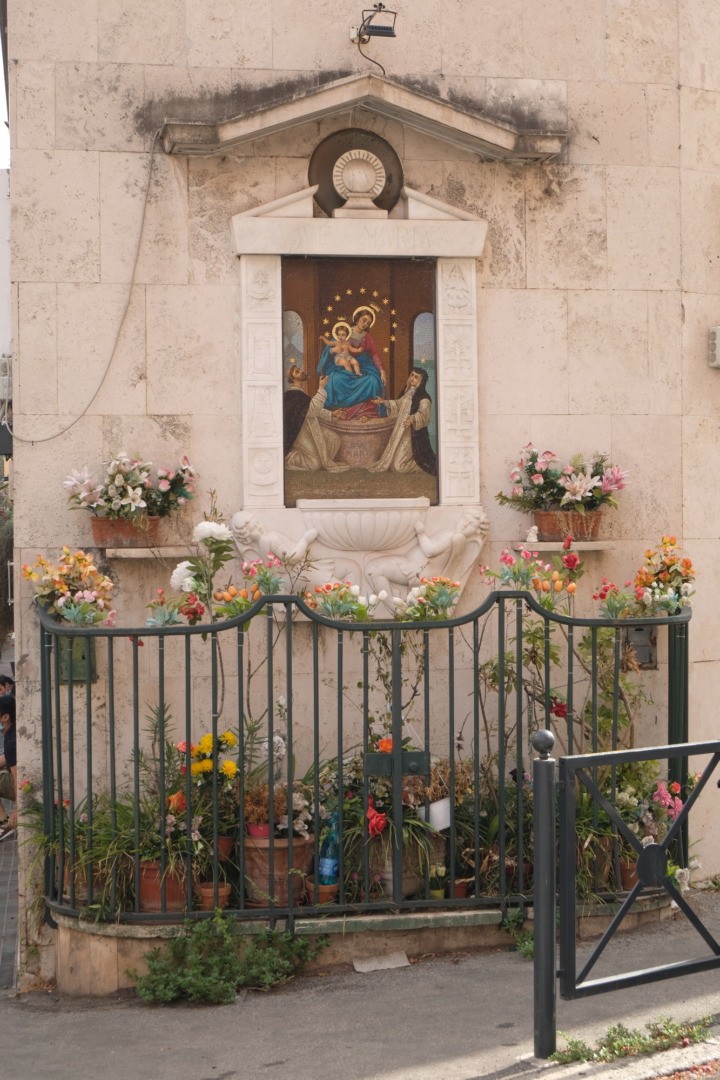
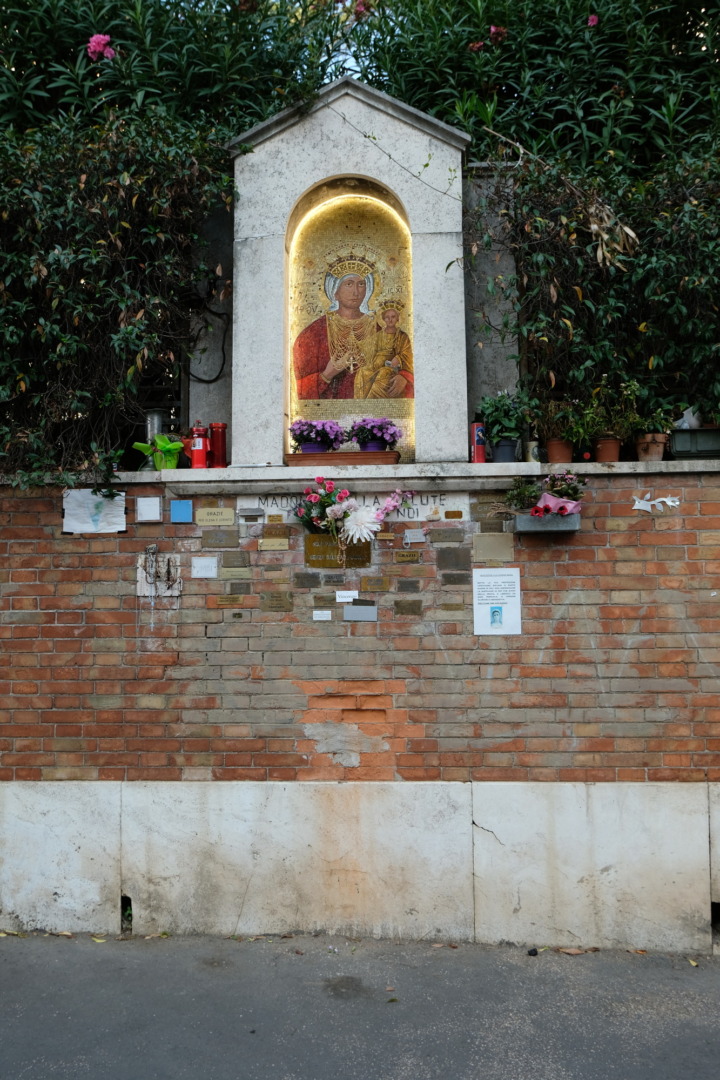
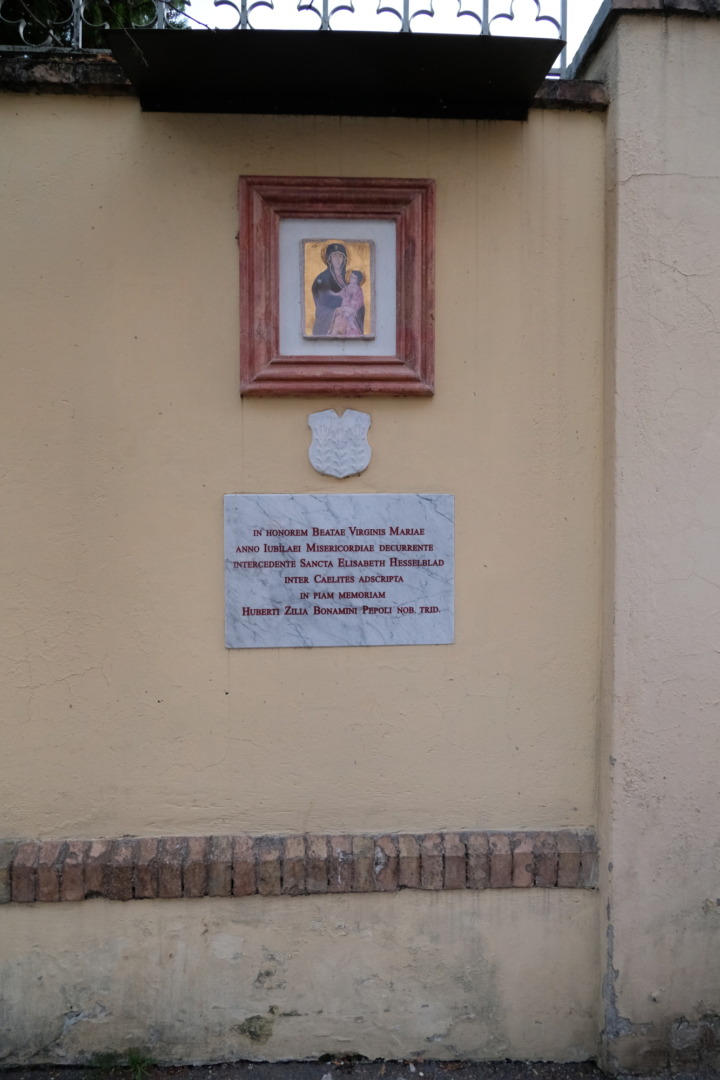
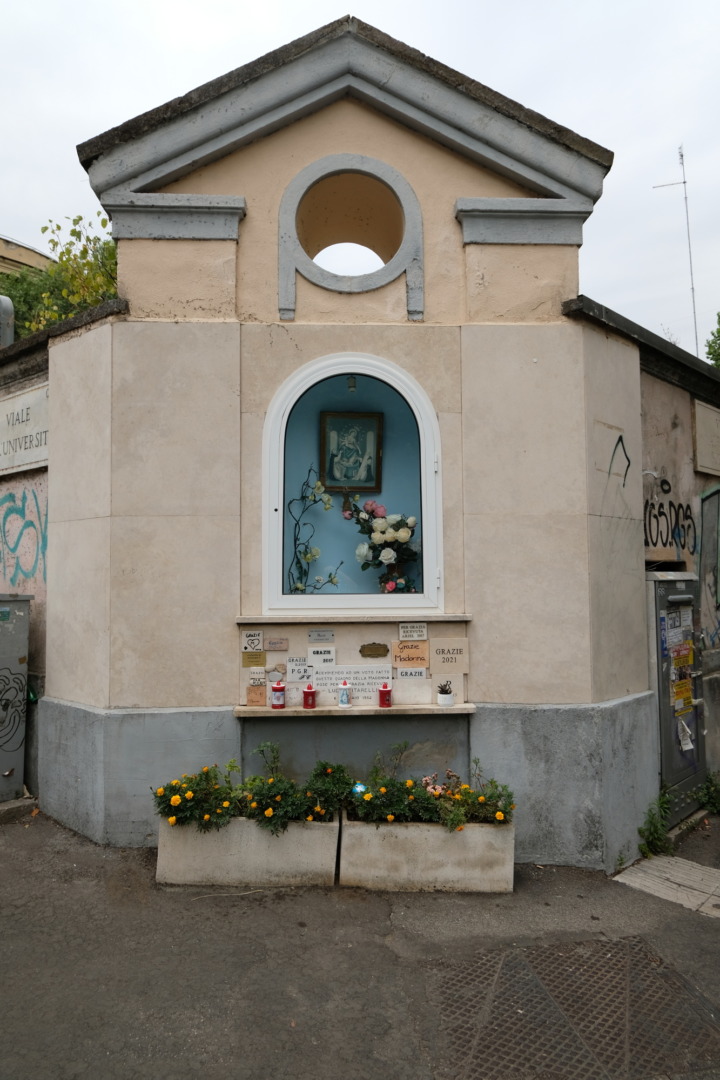
An interesting and intriguing article, Andrea. Coming from a country, which is historically largely a Catholic one, I am familiar with wayside altars and votive offerings. There were also other ways of achieving the same ‘effect’ such as votive candles in churches and also performing certain religious practices such as the ‘9 First Fridays’ and ‘Patterns’ which involved walking around holy wells a certain number of times. Then we had the principle of indulgences and plenary indulgences which could wipe out past sins or be cashed in against a desired outcome e.g. the success of a child in school/college exams. I could do a treatise on all of this, but I would be writing about the past rather the present Ireland. The cost accounting/business approach to religion, both votive and financial, is not unique to Catholicism. A lot of Protestant Fundamentalist preachers in the US and elsewhere had the tradition of passing the plate around the church and one can only speculate as to what people who threw in large sums were expecting to receive in return.
Wayside altars can be found in many countries, particularly in the Balkans and Greece. Two friends of mine had an exhibition at the Irish Architectural Archive some years ago showing photos of wayside altars in Greece taken with a Hasselblad. They also went into the design of such features, hence the architectural interest.
William
Thank you, William. Exactly as you say, I also thought that votive offerings are a thing of the past; but looking more closely at these street shrines, I realized that many plaques are dated 2021! This is one of the reasons of my curiosity from which this project started: the past is still with us, at least in Italy.
What a great idea! You and your camera really had nice outings, and your history lesson appreciated! Thank you
Thank you John, I never realized before how many little shrines dotted the streets of my surroundings. It is true that when you walk with tour camera you have a different attention to the details.
A good start for a long term project.
I have an X-E3 and it’s like a Saint of no religion. Absolutely inessential, you can forget it’s in your pocket. Hard to love, arises no passions. But silently is able to produce miracles.
Thank you George, indeed I am photographing more and more ex Votos! And yes, the xe3 is a lovely camera and produces eccellent pictures; with the 27mm pancake lens it fits in a pocket.
That’s my choice too for the E3; the 27 is like a living fossil. Thanks
Thank you Andrea. Hopefully the pandemic will be completely behind us sooner rather than later.
Thank you Jean, I really hope so, and may be when the Covid will be over, I might add my own plaque under a shrine, and add its picture to my collection!
Thank you! I love this type of “joining the dots”. The simple connection between “Incrocio” and “Croce” is an interesting start to a story with many layers within it.
Thank you, Chef I greatly appreciate tour observation!
Thank you Andrea—how apt that the goddess of roads had a bad temper.
Thank you, Farhiz.
Your first photo said it all for me Andrea; Grazie 2021. I wonder how long the pandemic will last. Thanks for this.
Thank you, Kevin.